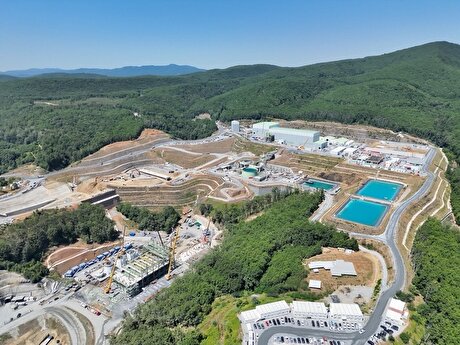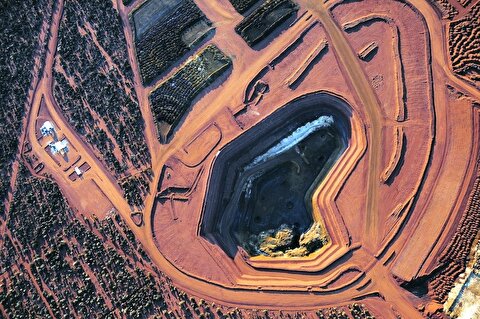
What does June 2019 have in Store for Global Steel Market?

On the other hand, ferrous scrap prices have been falling due to the ongoing trade war between U.S. and China, rising trade protectionism that has resulted in subdued buying interests. Turkey which is the world’s largest scrap buyer and imports majorly from U.S. is not buying the same partly in retaliation over U.S. trade actions.
With falling scrap prices, sellers are destocking their inventories and it is likely that the prolonged destocking by mills will exert more downward pressure on its prices. However, in case of iron ore it is likely its supplies may improve with the rise in iron ore production and shipments in Brazil and Australia which will ultimately help in lowering down its prices.
The struggle of poor steel demand to continue in U.S. and Europe
The intensifying trade war between U.S. and China that started last year has adversely affected the global steel industry and the situation is not likely to see any major change in the month of June.
The steel producing nations are churning out steel keep their domestic industry going but two major steel consuming countries, Europe and U.S. are facing tepid domestic demand and with this, no major change will be seen in the two countries’ consumption pattern in the month of June.
United States: The steel prices in U.S. already plunging and with U.S. removing import restrictions on steel imports from Canada and Mexico and halving duties to 25% on imports from Turkey has created a panic of rise in imports in U.S. once again. In addition, the softening of ferrous scrap prices has created expectations for further decreases and has influenced buyers to delay their new purchases.
Europe: In Europe, the current quota system is helping to keep steel prices stable in many markets, but the safeguard measures have not brought the expected benefit for EU mills. Too many cargoes arrived at the start of the season in February and April and clients have filled their stockyards. Subsequently, mills had to reduce their prices to collect new orders. Now, however, the next wave of imports is expected to arrive in July, which will probably cover a good portion of the demand for the summer period.
To tackle this situation, the steel mills shall adjust and reposition themselves based on the situation outlined above. The current alternatives are either to push more steel into the domestic and regional markets and thereby, of course, end up putting downward pressure on prices, or, on the other hand, to stop production. In the case of ferrous scrap, many scrap smelters around the world have already decided that less could be better. Meanwhile, ArcelorMittal Europe is the only blast furnace-based producer that has announced cutbacks in production in order to increase prices, and this seems to have worked for now.
China will continue to pump more steel
Although China is facing tepid domestic demand, it will continue to churn out more steel and is expected to touch one billion marks by the end of 2019. However, its exports will remain muted due to increase in trade barriers. The month of June will not see any major decline in daily crude steel output of the country and is, in fact, is expected to increase M-o-M basis.
The future looks unstable
The trade barriers and the tariff picture for the second half of this year are quite uncertain, far outweighing any uncertainty in demand, supply, and competition. Margins for steel producers are approaching painful levels.
The key area of concern is that the capacity utilization of steel units has been decreasing in 2019 in many regions. Apart from this, the political reasons such as elections from Istanbul to Jerusalem, the G20 meeting in Tokyo, the US-China trade meltdown, and crude oil crises linked to Venezuela and Iran are contributing to uncertainty in the global market.
Under the current circumstances, the steel market can be described as fluctuating and unstable. The outlook is very much uncertain, less predictable and weaker. However, it is anticipated that situation might improve during the summer season which starts from the end of June month due to industrial vacation period in some part of the world which will balance out the demand-supply imbalance a bit.



Newmont nets $100M payment related Akyem mine sale

First Quantum scores $1B streaming deal with Royal Gold

Caterpillar sees US tariff hit of up to $1.5 billion this year

Gold price rebounds nearly 2% on US payrolls data

Copper price collapses by 20% as US excludes refined metal from tariffs

St Augustine PFS confirms ‘world-class’ potential of Kingking project with $4.2B value

Goldman told clients to go long copper a day before price plunge

B2Gold gets Mali nod to start underground mining at Fekola

Copper price posts second weekly drop after Trump’s tariff surprise

Codelco seeks restart at Chilean copper mine after collapse

US slaps tariffs on 1-kg, 100-oz gold bars: Financial Times

BHP, Vale offer $1.4 billion settlement in UK lawsuit over Brazil dam disaster, FT reports

NextSource soars on Mitsubishi Chemical offtake deal

Copper price slips as unwinding of tariff trade boosts LME stockpiles

SAIL Bhilai Steel relies on Danieli proprietary technology to expand plate mill portfolio to higher steel grades

Alba Discloses its Financial Results for the Second Quarter and H1 of 2025

Australia weighs price floor for critical minerals, boosting rare earth miners

Australia pledges $87M to rescue Trafigura’s Nyrstar smelters in critical minerals push

Fresnillo lifts gold forecast on strong first-half surge

US slaps tariffs on 1-kg, 100-oz gold bars: Financial Times

BHP, Vale offer $1.4 billion settlement in UK lawsuit over Brazil dam disaster, FT reports

NextSource soars on Mitsubishi Chemical offtake deal

Copper price slips as unwinding of tariff trade boosts LME stockpiles

SAIL Bhilai Steel relies on Danieli proprietary technology to expand plate mill portfolio to higher steel grades

Alba Discloses its Financial Results for the Second Quarter and H1 of 2025

Australia weighs price floor for critical minerals, boosting rare earth miners

Australia pledges $87M to rescue Trafigura’s Nyrstar smelters in critical minerals push

Fresnillo lifts gold forecast on strong first-half surge














